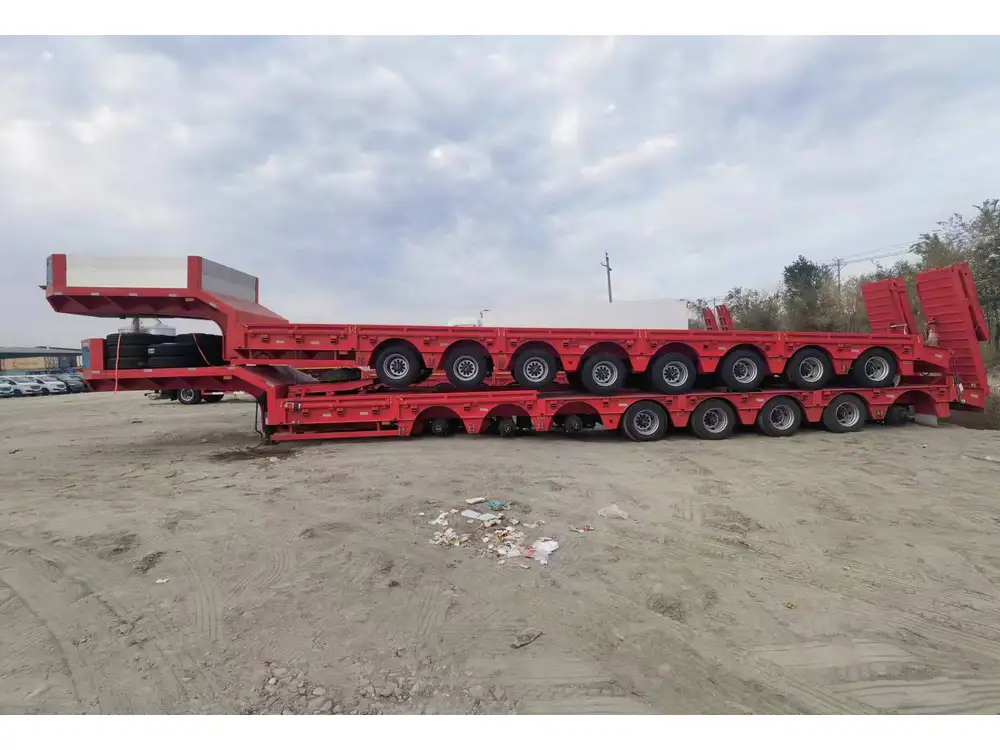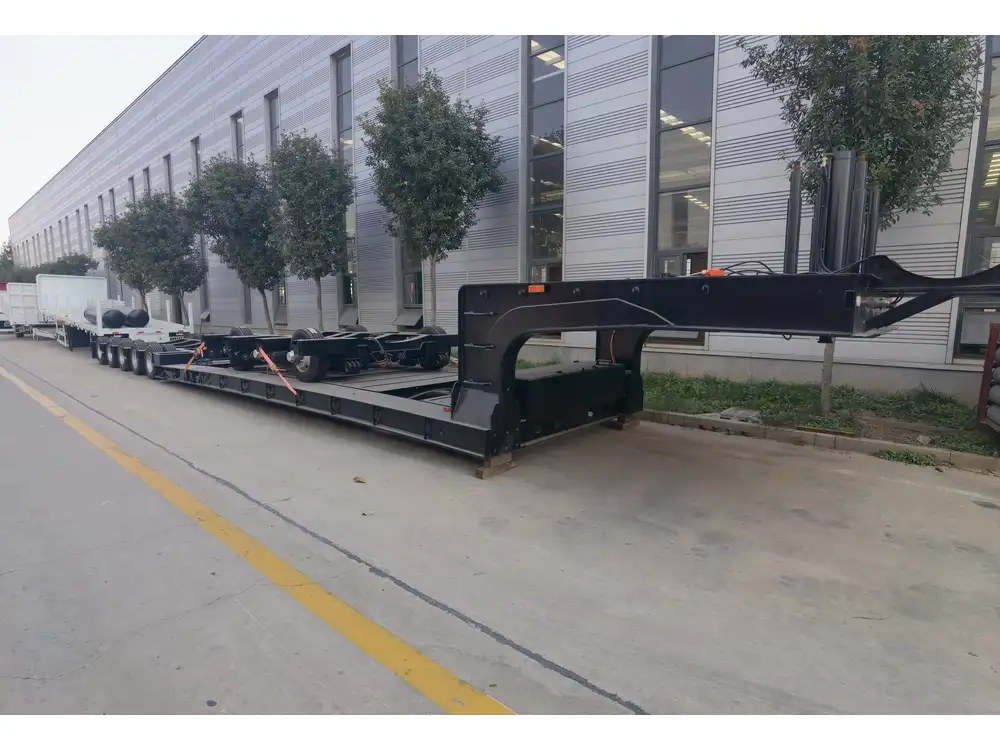When it comes to the transportation industry, the ability to efficiently hook up a trailer to a semi-truck is crucial. The process, while straightforward for seasoned professionals, can be daunting for newcomers or those unfamiliar with specific setups. In this comprehensive guide, we will systematically dissect the fundamental aspects of connecting a trailer to a semi-truck. By addressing vital steps, troubleshooting common issues, and providing additional insights that might not be at the forefront of users’ minds, we equip you with the knowledge needed for a seamless experience.
Understanding the Components: A Brief Overview
Before delving into the practicalities of connecting the trailer to the truck, it’s essential to understand the key components involved in the process:
| Component | Description |
|---|---|
| Fifth Wheel Hitch | The mechanism located on the semi-truck that connects to the trailer. |
| King Pin | A metal pin located at the front of the trailer, designed to lock into the fifth wheel hitch. |
| Safety Chains | Chains that act as a secondary connection to prevent trailer detachment. |
| Air Lines | Hoses that provide air pressure for the trailer’s braking system and other pneumatic functions. |
| Electrical Connection | Wiring that connects the truck’s electrical system to the trailer’s lighting and other electronic components. |
Step-by-Step Guide to Hooking Up a Trailer

Step 1: Prepare the Semi Truck and Trailer
1. Inspect the Equipment
Prior to any connection, conducting a thorough inspection of both the truck and trailer is vital. Check for any visible damages, asegurate that your lights are functioning, and ensure that air lines and electrical connections are undamaged.
2. Position the Truck
Align the semi-truck with the trailer. It is often advisable to back the truck directly under the trailer for a precise connection. The truck should be at a height where the king pin will fit smoothly into the fifth wheel hitch.
Step 2: Positioning and Connecting
1. Lower the Trailer
Use the landing gear to lower the trailer onto the fifth wheel. This might involve cranking the gear until the trailer contacts the hitch.
2. Engage the Fifth Wheel Lock
As you continue to back up the truck, ensure that the king pin slides into the fifth wheel hitch. You should hear a loud “clunk” indicating that the lock has engaged. To ensure a secure fit, pull forward slightly before shutting off the engine.
3. Check the Connection
Visually inspect the connection between the trailer and the truck. The king pin should be fully engaged in the fifth wheel, and the locking mechanism should be securely in place.
Step 3: Securing Additional Connections
1. Fasten Safety Chains
Attach safety chains from the trailer to the designated points on the semi-truck. Cross these chains under the trailer tongue to create a cradle effect. This prevents the trailer from detaching in the event of a disconnect.
2. Connect Air Lines and Electrical Cables
- Air Lines: Find the blue and red air hoses and connect them to the corresponding fittings on the trailer. Knowing color codes—blue for the brakes and red for the drive—streamlines this process.
- Electrical Connection: Plug the electrical connector into the truck’s socket. Ensure that all running lights, turn signals, and brakes are operational.

Step 4: Final Checks
1. Conduct a Light Test
Before hitting the road, conduct a thorough light check by activating the truck’s lights and ensuring that they illuminate correctly on the trailer. This includes brake lights, turn signals, and running lights.
2. Perform a Brake Test
Perform a test to ensure that the trailer’s brakes respond properly. Activate the trailer’s brakes, and gently push the truck forward to check for responsiveness.
Common Challenges When Hooking Up a Trailer
While the process of hooking up a trailer to a semi-truck might seem routine, several issues can arise, leading to complications. Addressing these challenges proactively can save time and ensure safety.
Misalignment Issues
Symptoms: Difficulty closing the fifth wheel lock or misalignment of the king pin.
Solutions: Adjust the truck’s position gradually—forward or backward—making minor corrections until a secure connection is achieved.

Trouble with Air Connections
Symptoms: Leaks in the air lines or failure of trailer brakes.
Solutions: Inspect the air hoses for tears or damages. Replace any worn hoses and ensure connections are secure and free from leaks.
Electrical Failures
Symptoms: Non-functioning lights or signals on the trailer.
Solutions: Check the truck’s electrical connection for corrosion, wires that may have come loose, or damage to the plug. Replace, repair or clean as needed.
Additional Tips for a Successful Hook-Up
Always Use Proper Gear: Wearing gloves aids in protecting against grease and grime, while safety shoes prevent slips, especially in inclement weather.
Communicate with Your Team: If working as a team, clear communication prevents misunderstandings and enhances safety.
Invest in Quality Equipment: Quality parts, including fifth wheel hitches and king pins, provide enhanced durability and reliability, preventing avoidable breakdowns.
Practice Regular Maintenance: Establish a maintenance routine to inspect trailer components regularly. Attention to wear and tear can preempt potential problems.

Best Practices for Safe Transport
Transporting a load isn’t just about connection; it’s also about safety on the road. Following best practices can minimize risks and enhance security during transit.
Load Distribution: Ensure the load is evenly distributed across the trailer to reduce sway.
Speed Control: Maintain appropriate speeds adapted to road conditions, ensuring braking distances are factored in.
Regular Stops: Take breaks during long hauls to check trailer connections and overall safety—particularly after an extensive driving period.
Awareness of Laws and Regulations: Familiarizing oneself with local regulations can help in maintaining compliance and ensuring safety. This includes weight limits, height regulations, and other specific local laws.
Proper Training: Engage in driving and hooking up seminars that enhance your skillset and understanding of handling trailers.
Conclusion: Mastering the Art of Hooking Up a Trailer
Understanding the intricacies of how to hook up a trailer to a semi-truck is indispensable for truck operators and logistics coordinators alike. By adhering to the systematic steps outlined in this guide, confronting challenges head-on with proactive solutions, and adhering to best practices in transportation, you not only ensure your own safety but that of other road users.
The mastery of hooking up a trailer is a blend of technique, attention to detail, and a solid understanding of equipment dynamics. With this comprehensive knowledge at your disposal, you are now equipped to face the logistical challenges ahead with confidence and expertise.



